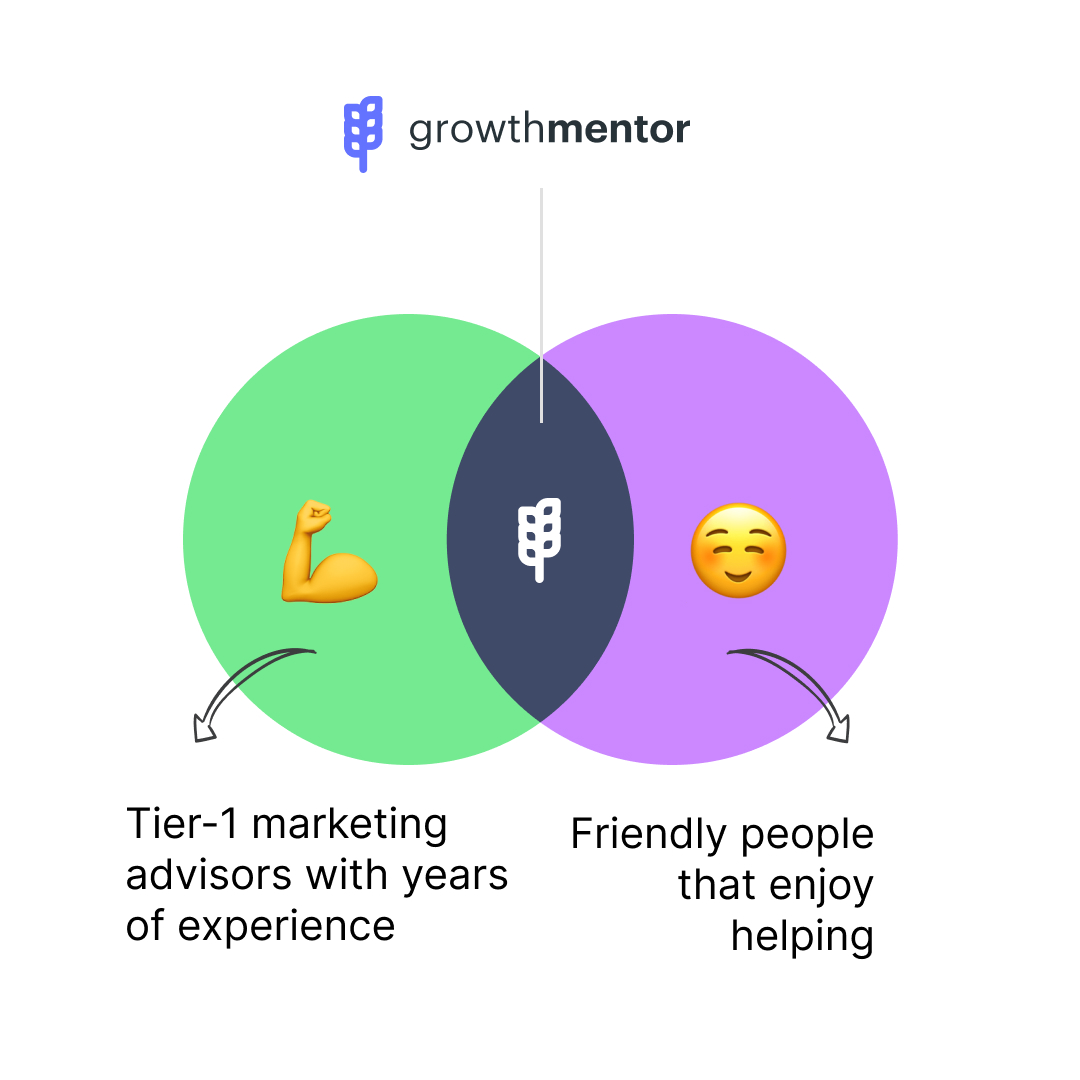How 9 Growth Marketing Experts Prioritize Their Marketing Ideas
I asked some of the smartest growth marketing experts I know “how they prioritize their marketing ideas.” Here’s their expert advice.
Coming up with awesome growth marketing ideas is kind of the easy part.
The real challenge comes in once you have more good ideas than you can execute.
That’s when you need to prioritize!
It takes a lot of planning, experience, focus and discipline to manage your marketing ideas ice box and know when and what to move into WIP.
Because if you prioritize everything then you prioritize nothing, right?
I personally struggle with this all the time, but with experience, I’m getting better and better at it.
I’m still in the process of refining my processes so I can better prioritize and project manage the most important growth initiatives first and in the right order and I’m sure there’s a lot that I could learn from other expert growth marketers!
That’s why I tried to pick the brains of some of the best growth marketing experts I know, and asked them this one hypothetical question:
“What’s the most helpful piece of advice you’d give to others for prioritizing marketing ideas?”
Let’s face it, knowing how other people prioritize can give you perspective on how you prioritize.
So if you have the nagging feeling like you are chronically biting off more than you can chew, maybe you can learn something from these people.
Nick Schwinghamer
I’ve been lucky enough to lead teams through all stages of growth, from inception, to finding product-market fit, to scaling success and maintaining market leadership and have learned a ton along the way.
One of the ideas that really helped me and the teams I’ve worked with in the past is “bullets before cannon balls”. It might sound a little weird, but it’s pretty simple.

Nick Schwinghamer - Former Director of Growth, Operations and Partnerships @ ShopifyYou should make sure your ideas are on target before you put a lot of effort into them.
To give yourself a good chance of creating repeatable, efficient success, you can break your efforts down into a couple of key phases:
- Bullets – use this time to run small effort tests to validate you’re aiming at the right target – which in this case is the right combination of audience, channel, message and timing. If you miss with a bunch of these bullets, that’s ok as they don’t have a major investment in them yet. When you get positive signals like high conversion rate and positive qualitative feedback, it’s like you’re hitting the bullseye of a target and you’re ready to move onto the next phase.
- Cannon Balls – with your aim focused on the bullseye you found with your bullets, you can then launch much larger, more time/money-intensive campaigns with a higher certainty of success. This phase is about getting the maximal return for your effort and doing things right.
If you think about what phase you’re in for each of your ideas, you can save yourself a lot of time, money and hard work by ensuring you prioritize the ideas that are most likely to succeed.
Aazar Ali Shad
5+ years of combined experience in field sales, Sales Development & Account Executive roles. I have helped grow startups to 1 Mn in ARR and am currently on a goal to reach $100k ARR on my own startup Ecomply.io. Am also responsible for driving growth at Userpilot.com.
My framework to prioritize marketing ideas is very simple. What’s stage are you at and what’s the end goal?
For example, your stage is early stage SaaS and you’re looking to get the first 10 customers. You will have a lot of marketing ideas. You could be trying Facebook and Google ads, doing some growth hacking or going to exhibitions to get customers.
To prioritize, I’d suggest choosing the end goal first. Secondly, the framework. These are the four options that I can assign any marketing task that I do.
- Important and Urgent
- Urgent
- Important
- Not urgent, but important some day.
What’s the most urgent marketing/sales idea that could get you first 10 customers? Think about it, then, prioritize based on these ideas. Using a framework like this has worked wonders for me.

Aazar Ali Shad - Head of Growth at Userpilot.ioTo maintain focus always be mindful of what stage you are at and what is your end goal.
The north star is your end goal and then priority.
Tomek Duda
I’ve built an agency, sold it, and then joined team that bought Growth Engine, Ladder Digital, to help them scale in various ways, including leading one of the best blogs about growth marketing. Most recently I worked with product teams on building products from scratch while ensuring there are activation and retention mechanisms in place, as well as helped scale a marketplace through increasing the supply side.
Identify the places in your marketing that need the most love.
Then what I like to do is build a shared idea backlog with the team. Include columns like idea name, description, hypothesis, target metric, owner and ICE scale to be able to prioritise them. I populate it with ideas of my own and then share with the team to show them what we already have.

Tomek Duda - Product & Growth ManagerI think it’s worth motivating the team by creating a reward for the person who suggested the idea that had the best % uplift in a given month.
Then it’s a matter of meeting with the team, picking the best ideas, building them out and measuring results. The learnings from them will fuel further experiments and provide a deeper understanding of your user base.
Dani Hart
After years of working with CEOs, Heads of Growth, and Marketers from all over the world, I now help organizations adopt sustainable & ethical growth practices to make positive impact on humanity & the environment.
Start with a clear goal. If you have no idea what you’re trying to achieve, whether it’s acquisition, activation, or engagement related, you will never know how to prioritize ideas against one another.
I’ve seen a lot of teams try to prioritize any and all ideas that come up. This leads to team burnout if the ideas are scattershot, half-assed, and without a clear goal in mind.
Instead, provide your team with an idea framework that includes the idea name, a description of the idea, what goal it will achieve, what effect it will have on the goal (impact), any supporting data as to why the idea is a good one to test (confidence), and how the idea will be implemented with any necessary resources described (ease).

Dani Hart - Former Head of Growth at Growthhackers.comIf you have no idea what you’re trying to achieve, whether it’s acquisition, activation, or engagement related, you will never know how to prioritize ideas against one another.
Our world is changing quickly and new ideas are easier than ever to come up with. If you don’t map your ideas back to business goals, you’ll be running in circles with little progress.
Yasmine de Arande
Yasmine is a Hybrid T- Marketer working as a growth strategist at Market8. In the last + 15 years, she has built extensive lateral knowledge across multiple industries and marketing channels, offline and online, fine-tuning a data-driven methodologies and building integrated marketing plans.
When it comes to marketing, one of the most common mistakes I see happening with startups and smaller businesses, is them jumping the gun and implementing a bunch of marketing ideas, because they are on trend.
Let me illustrate, a new social media channel gains traction, and everyone thinks their brand should be on there.
The truth is it doesn’t. Or at least, not necessarily.
10 years ago, mobile apps were THE thing, and every brand wanted one. Some thought it was a great investment, reading the number of downloads… but was it, if the app showed no engagement?
A rule of thumb: strategy precedes marketing channel implementation. Marketing is contextual. What works for a brand, will very likely not work for yours. The key is to acknowledge your business challenges, understand your ideal buyer persona and it’s buying cycle, and then turn your business and sales goals into marketing objectives.
You will soon find that your marketing plan is not a myriad of ideas, but an integrated mix of channels that work towards the same goals. And the more integrated your channels, the more robust your plan is.
So, before you put the cart before the horses, here are a few tips:
- First, think of your business goals
- Translate them into marketing goals
- Think of your ideal buyer persona
- Are your ideas founded on insights from data analysis?

Yasmine de Aranda - Growth Marketing Strategist at Market8Strategy precedes marketing channel implementation. Marketing is contextual. What works for a brand, will very likely not work for yours.
Now? Do you still have too many great ideas? Do you have the resources and the budget to implement?
If you do, I find that one of the best way to help you prioritize your marketing ideas, is to always work by the impact on your business. What will have the highest impact (exposure + time), but is the easiest (fastest + cheapest) to implement. It is based on Conversion XL’s prioritization framework for A/B tests (AKA PXL).
Matthew Kay
Growth-minded marketer and leader with a proven track record of driving positive outcomes across digital channels. Pursuing excellence and putting years of experience to work every day in SEO, conversion rate optimization, email marketing, web design, and beyond. Learn more about Matthew at matthewgkay.com.
When thinking about prioritizing marketing ideas, it’s important to always make sure you are aligning your marketing ideas and prioritizing them alongside the goals and context of the business you’re working with!
Whether as an in house marketer as a consultant, the same mindset applies.
At the end of the day, marketing is about driving outcomes for a business, plain and simple.
Too often it seems that I either personally encounter or hear about marketing strategies and tactics being deployed in a vacuum without the business context at hand being taken into account.
- How does the business make money now?
- Where have all the business’s existing customers come from?
- What has worked in the past?
- What has not worked in the past?
- Where does the business make the largest amount of money, what offering or product?
- What does the business want to change?
- What does the business want to do in the next 5 years? 10 years?
Posting thought leadership videos on the company LinkedIn page can be fun and effective for some, sure, but does it make sense for a home services company to do this?
Probably not.

Matthew Kay - Growth Marketing and SEOTalk to people doing sales for the business. Get into the head of the CEO. Listen to sales and support calls. Read the business reviews. Learn the history. Dig deep.
On the other side of this, you’ll be able to surface marketing ideas that should be prioritized out of the gate because they’re completely in sync with the business you’re working with.
Sunni Sukumar
I come in peace from Planet DorkNerd to help you with your tracking / analytics. We’ll have a plain English convo to measure what’s working, so you can do more of it.
I get excited about new marketing ideas darn near every day, so filtering and ranking them keeps me sane.
But how?
3 ways:
1. Knowing the customer
2. The cost to test the idea
3. The guesstimated impact
That last one is the hardest. It’s easy to be wildly wrong. We’re talking about testing, after all.

Sunni Sukumar - Tracking & Analytics NerdKnowing why people buy is really the best filter, which takes conversations.
Knowing why people buy is really the best filter, which takes conversations.
Some key questions to ask:
- What problem(s) were you dealing with?
- How long you were coping with those problems?
- What finally got you to look for solutions?
- What else did you find before us?
- What wasn’t workable about those solutions?
- What specifically was the most attractive about us?
The answers may surprise you…
For example, some customers said they liked how irreverent our ads were.
Some others were impressed by how responsive we were to comments on Facebook.
Still others loved our detailed website FAQ.
Those clues into what people want to see / hear and where are gold. They let you nix “meh” experiments and run the best ideas.
And, among those, the cheaper ones are easier to justify. Especially since they tend to turn up insights you can roll into higher-cost experiments to boost your win rate.
Danilo De Rosa
Danilo is an experienced growth manager for fast-growing US & EU Tech Startups and mid-size companies. Former VC backed Startup CEO & Founder and former Head of Experiences in a leading EU OTA travel firm.
I had often this issue with many of my clients and projects.
As long as it is a common issue to find a shared ground on which to build the marketing strategy for international teams, I often find that the average team is often looking for a “shiny object” app to solve all their creative ideas in an efficient execution.

Danilo De Rosa - Growth Marketing ManagerTeams often look for a “shiny object” app to solve all their creative ideas in an efficient execution. But sometimes an efficient combination of multiple tools can help to prioritize marketing tasks at no cost.
While I used several tools to complete the brainstorming phase (the last is realtimeboard.com for shared mindmaps or sketchapp.com for flowchart design) I have completed my best projects through the Google suite apps because it’s browser based and always-live-in-the-cloud.
An efficient combination of Google Suite tools can help to prioritize marketing tasks in any project:
- Google Sheets, planning framework, research
- Google Slides, brainstorming ideas through a focused presentation
- Google Hangouts + Google Calendar, an useful combination to plan and execute meeting calls on a daily/weekly basis
- Google Docs, they help to boost productivity through an advanced use of their “notes” feature, that permits to any member to give their feedback on specific topics
*Notable exceptions*
- Trello – Great shared tool to plan daily, weekly activities with remote teams.
- Slack/Discord – Great to have a daily conversation and update the whole teams about the ongoing tactics.
- Jira – I use Jira only on projects that include +4 members and are mostly based on a daily execution.”
Adam Moncrief
Co-Founder/Principal at MH Digital Group. Former Engineer turned Marketing Technologist. Formerly ran Customer Success at Net-Results Marketing Automation.
Start from the business as a whole, and figure out where bottlenecks are in your processes. Whether they be friction between steps in your marketing/sales funnel, or if you have a gap in attribution.

Adam Moncrief - Co-Founder/Principal at MH Digital GroupFinding bottlenecks makes measuring your efforts easy and allows you to pivot if the thing you previously prioritized doesn’t turn out to be all that valuable or successful.
Then, use tools like marketing automation to solve those areas in order of how big the bottlenecks are. It’s nice to be able to have the time and resources to use every feature available in all the tools at your disposal, but it’s important to prioritize what fits your business first and foremost.
Want to talk?
Talking through your marketing ideas out loud is a cathartic experience for many marketers and unfortunately, is not done often enough. By vocalizing your growth marketing strategy to another expert growth marketer, you’ll be able to get 3rd party perspective of the health of your marketing backlog.
You might be spreading yourself too thin, you might not be experimenting enough with other channels, you never know what insight you might uncover after a 30 minute call with a growth mentor!



